Dongcheng Yuan
Sherman
Large AI Model for Delay-Doppler Domain Channel Prediction in 6G OTFS-Based Vehicular Networks
Mar 03, 2025Abstract:Channel prediction is crucial for high-mobility vehicular networks, as it enables the anticipation of future channel conditions and the proactive adjustment of communication strategies. However, achieving accurate vehicular channel prediction is challenging due to significant Doppler effects and rapid channel variations resulting from high-speed vehicle movement and complex propagation environments. In this paper, we propose a novel delay-Doppler (DD) domain channel prediction framework tailored for high-mobility vehicular networks. By transforming the channel representation into the DD domain, we obtain an intuitive, sparse, and stable depiction that closely aligns with the underlying physical propagation processes, effectively reducing the complex vehicular channel to a set of time-series parameters with enhanced predictability. Furthermore, we leverage the large artificial intelligence (AI) model to predict these DD-domain time-series parameters, capitalizing on their advanced ability to model temporal correlations. The zero-shot capability of the pre-trained large AI model facilitates accurate channel predictions without requiring task-specific training, while subsequent fine-tuning on specific vehicular channel data further improves prediction accuracy. Extensive simulation results demonstrate the effectiveness of our DD-domain channel prediction framework and the superior accuracy of the large AI model in predicting time-series channel parameters, thereby highlighting the potential of our approach for robust vehicular communication systems.
Spatial-Temporal Attention Model for Traffic State Estimation with Sparse Internet of Vehicles
Jul 10, 2024
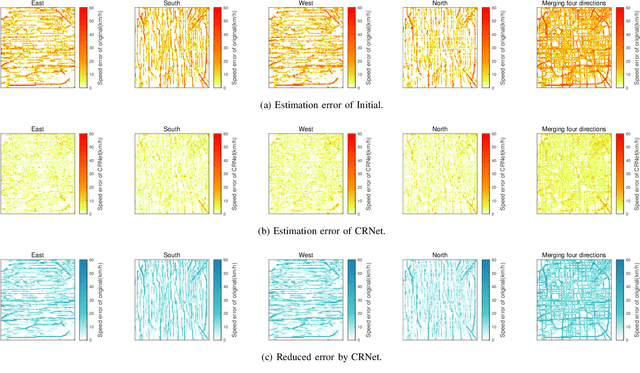
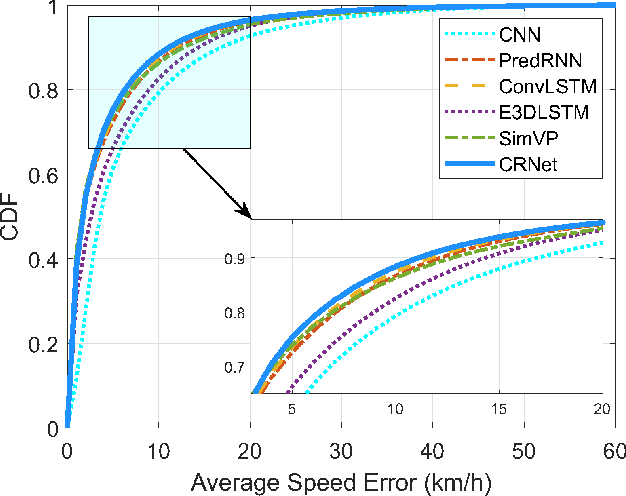

Abstract:The growing number of connected vehicles offers an opportunity to leverage internet of vehicles (IoV) data for traffic state estimation (TSE) which plays a crucial role in intelligent transportation systems (ITS). By utilizing only a portion of IoV data instead of the entire dataset, the significant overheads associated with collecting and processing large amounts of data can be avoided. In this paper, we introduce a novel framework that utilizes sparse IoV data to achieve cost-effective TSE. Particularly, we propose a novel spatial-temporal attention model called the convolutional retentive network (CRNet) to improve the TSE accuracy by mining spatial-temporal traffic state correlations. The model employs the convolutional neural network (CNN) for spatial correlation aggregation and the retentive network (RetNet) based on the attention mechanism to extract temporal correlations. Extensive simulations on a real-world IoV dataset validate the advantage of the proposed TSE approach in achieving accurate TSE using sparse IoV data, demonstrating its cost effectiveness and practicality for real-world applications.
Spatial-Temporal Generative AI for Traffic Flow Estimation with Sparse Data of Connected Vehicles
Jul 10, 2024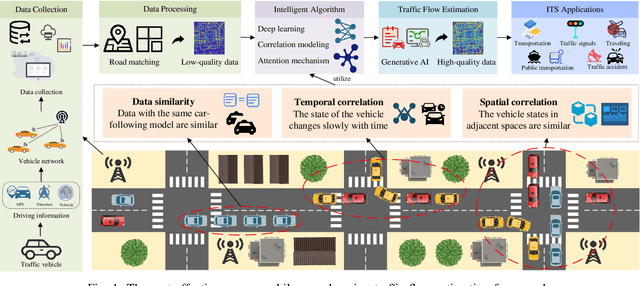

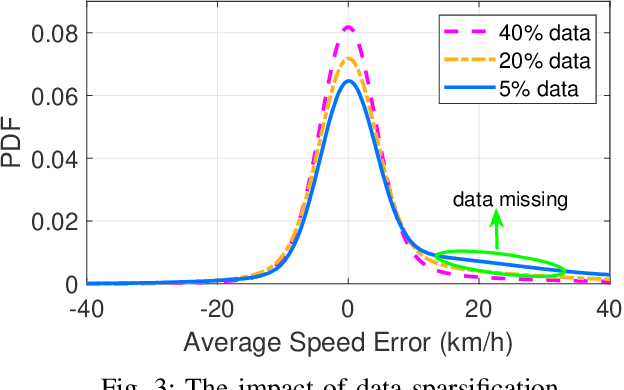
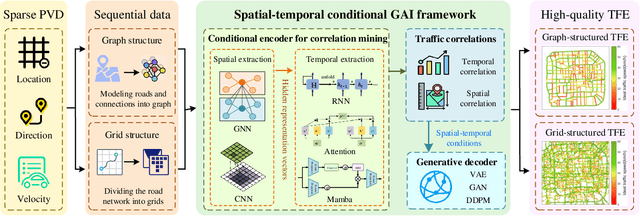
Abstract:Traffic flow estimation (TFE) is crucial for intelligent transportation systems. Traditional TFE methods rely on extensive road sensor networks and typically incur significant costs. Sparse mobile crowdsensing enables a cost-effective alternative by utilizing sparsely distributed probe vehicle data (PVD) provided by connected vehicles. However, as pointed out by the central limit theorem, the sparsification of PVD leads to the degradation of TFE accuracy. In response, this paper introduces a novel and cost-effective TFE framework that leverages sparse PVD and improves accuracy by applying the spatial-temporal generative artificial intelligence (GAI) framework. Within this framework, the conditional encoder mines spatial-temporal correlations in the initial TFE results derived from averaging vehicle speeds of each region, and the generative decoder generates high-quality and accurate TFE outputs. Additionally, the design of the spatial-temporal neural network is discussed, which is the backbone of the conditional encoder for effectively capturing spatial-temporal correlations. The effectiveness of the proposed TFE approach is demonstrated through evaluations based on real-world connected vehicle data. The experimental results affirm the feasibility of our sparse PVD-based TFE framework and highlight the significant role of the spatial-temporal GAI framework in enhancing the accuracy of TFE.
 Add to Chrome
Add to Chrome Add to Firefox
Add to Firefox Add to Edge
Add to Edge